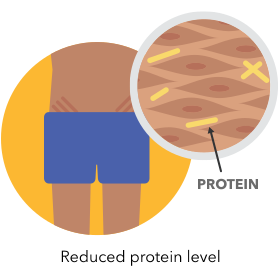How it works
Stretch marks are a type of scarring that look like stripes on the skin and are commonly found on the hips, thighs, and abdomen. They often develop when the skin stretches during a quick period of growth, like during adolescence, pregnancy, or rapid weight gain.
The genetic link
23andMe scientists identified 544 genetic markers associated with stretch marks. They identified these by analyzing genetic data and survey responses from more than 670,000 23andMe consented research participants. In addition to genetics, other factors like age, sex, and ancestry can also influence your chances of having stretch marks.

Did you know?
Scientists don’t know exactly why some people are more susceptible to stretch marks than others. One reason may be that when skin is stretched from rapid growth, the resulting damage doesn’t heal as well in some people, leading to stretch marks. This idea is supported by studies on skin cells from people with stretch marks, which showed that their cells make lower amounts of certain proteins that are important for skin elasticity and repair.
Explore more
Wondering if stretch marks might be in your future? 23andMe can give you a closer look at some of the genetic variants that influence stretch marks. Buy one of our services, such as our Health + Ancestry Service, to find out whether you’re more likely to have stretch marks based on your genetics and other factors.

Health + Ancestry Service
References
Gilmore SJ et al. (2012). “A mechanochemical model of striae distensae.” Math Biosci. 240(2):141-7.
